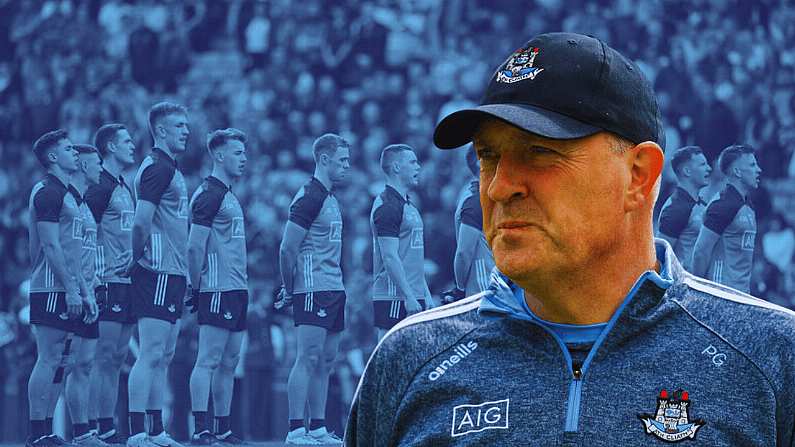In terms of preparation, inter-county GAA has moved to a whole new level over the last decade or so.
The way in which teams prepare now both on and off the pitch is in a completely different stratosphere to what it once was. Not only has sports science allowed coaching teams get the absolute maximum out of their players, but the detail that goes into fitness and tactical work has also come on in leaps and bounds.
A handful of teams acted as trailblazers in this regard. Jim McGuinness certainly played a big part in the process, something that was brought to the next level by Dublin under Jim Gavin.
Pat Gilroy also played a role during his time with Dublin, although he believes that the inter-county one is a very different one now to what it was just over a decade ago.
Pat Gilroy explains one advantage Dublin have lost
While Gilroy is no longer a manager at inter-county level, he has been involved in the Dublin setup under Dessie Farrell in recent times.
That has given him an insight into just how much the sport has changed over the years, with one thing in particular standing out to him.
In a revealing interview with the Irish Times, he said that Dublin no longer hold a fitness advantage over many teams in the way they once did.
Whatever fitness advantage you might have had before is gone.
That was the case in Division Two this year. Clare matched Dublin for fitness, Kildare did, Louth did, Derry did obviously. Meath were maybe a bit behind. But most teams in Division Two were absolutely up to the pace.
That never used to be the case. Back then, you were beating teams with fitness in the league. Even if you came up against a team that had a good tactical plan and who played well against you, you kind of knew that as the game wore on, you’d have the fitness to see them fade in the last 15 minutes.
That’s gone. Fitness is not going to run them off the pitch. That’s a really big change. There was a huge gap that doesn’t exist any more.
You can read the interview in full here.
This has perhaps played a role in Dublin's relegation from Division One last season, where they were no longer able to rely on their superior fitness to get past teams in the league.
It is certainly an interesting observation.













